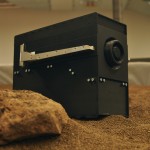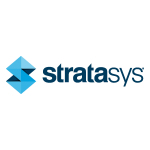Stratasys FDM 3D Printing Supports German Space Exploration Mission to Mars
-
Stratasys is cooperating with the Institute for Robotics and
Mechatronics (Institut für Robotik und Mechatronik) of the German
Aerospace Centre (Das Deutsche Zentrum für Luft- und Raumfahrt e.V.)
in the production of a TransRoPorter for unmanned missions to Mars
MINNEAPOLIS & REHOVOT, Israel–(BUSINESS WIRE)–Stratasys
Ltd. (Nasdaq:SSYS), the 3D printing and additive manufacturing
solutions company, today announced that the German
Aerospace Centre (Das Deutsche Zentrum für Luft- und Raumfahrt e.V.)
is using Stratasys
FDM 3D printing for the production of a fully-working prototype of
‘TransRoPorter’ (TRP).
TransRoPorter, built at the Institute for Robotics and Mechatronics
(Institut für Robotik und Mechatronik), is an exploration robot designed
for unmanned flights to Mars and set for launch in four to five years.
To successfully explore Mars with a robot, design and functionality are
key factors to meeting the objectives of the mission. Using a Stratasys
Fortus 900mc Production 3D Printer, the research team 3D printed a
working prototype, significantly reducing production times compared to
traditional methods. This enables the team to test the design and
functionality of the robot under simulated extreme conditions ahead of
time.
Dr. Kaj Fuehrer, Head of System Building Technology South (Leiter
Systemhaus Technik Süd), is developing and testing the 3D printed robot
prototype together with his colleagues Dr. Stefano Seriani und Dr. Armin
Wedler. The TransRoPorter is made from two components: the moveable TRP
Rover-Unit, made to navigate in unstructured terrain, and the
Payload-Module (PM), which carries spare parts, communication technology
and scientific tools. To ensure functionality and practicality of the 3D
printed prototype, rigorous testing is required.
Fast production
In developing the TransRoPorter prototype, it is essential for the part
to fit the design, be customized to exact specifications and have
specific material properties. “For us it was clear, a prototype
made out of metal was too expensive and complex in production,” explains
Dr. Fuehrer. Therefore the team decided on a 3D printed prototype, which
is not only produced faster than the alternative out of metal, but also
with less associated costs. The metal alternative also needs to be
finished post-production – more work with additional costs.
“In the planning of this project, we always preferred 3D printing
technology,” he continues. “It became evident to us that using 3D
printing for the production of the TransRoPorter was truly the least
expensive, fastest and most elegant solution. Everyone involved in the
project is delighted with the outcome.”
Optimizing functionality
In addition to the time and cost savings, the functionality of the
prototype was critical to Dr. Fuehrer and his team. “Our prototypes are
often very complex and typically push the boundaries of what is
possible,” says Dr. Fuehrer. “Therefore, it is important to choose the
appropriate production method and material, so that we can achieve the
desired functionality without any limitations.”
Using the Stratasys Fortus900mc Production 3D Printer, the research team
are 3D printing large parts in FDM thermoplastic materials. According to
Dr. Fuehrer, the ASA material was ideally suited for testing the
TransRoPorter prototype, enabling the team to produce a strong enough
Box to contain all the technology safely within.
“It was extremely important that the fit was right, that the box could
be mounted to the tracks and the docking port worked,” he explains.
“Utilizing Stratasys FDM 3D printing technology, we found that the
material basically has no distortion. The decision for ASA material was
consciously made, as it is ideal for our purposes and handling.”
Stefano Seriani adds: “The stability of the ASA material also played a
large role for us. We needed a fully functional prototype that could
perform in all tests and withstand the strain of the design. The tough
and rigid properties of the Stratasys material were therefore an ideal
fit to test the TransRoPorter’s functionality for its journey to Mars.”
Gaining valuable knowledge
According to Dr. Fuehrer, 3D printing also supports other strategic
goals. “A new technology leads to new thought processes. Over the past
few years, many colleagues are already thinking in 3D and are involving
additive manufacturing into plans for other projects they are starting
with. This new knowledge has opened them up to a new set of
possibilities within product development.”
Andy Middleton, President Stratasys EMEA, concludes: “We are proud to
support the German Aerospace Centre (Das Deutsche Zentrum für Luft- und
Raumfahrt) in achieving its mission to Mars. The project is a prime
example of how our FDM 3D printing technology and materials can enable
designs to be tested quickly in extreme conditions, particularly
important in aerospace where complex geometries are required and each
part needs to be qualified. We look forward to seeing how additive
manufacturing will be adopted further along the development of the
TransRoPorter.”
For additional news and images, please visit the Stratasys newsroom.
About Stratasys
For nearly 30 years, Stratasys
Ltd. (NASDAQ:SSYS) has been a defining force in 3D printing
and additive manufacturing, shaping the way things are made.
Headquartered in Minneapolis, Minnesota and Rehovot, Israel, the company
empowers customers across vertical markets, including Aerospace,
Automotive, Healthcare, Education, and Consumer Products, by enabling
new approaches for design and manufacturing. Stratasys solutions offer
design freedom and manufacturing flexibility, reducing time-to-market
and lowering development costs, while improving products and
communication. Subsidiaries include MakerBot, Solidscape, and Stratasys
Direct Manufacturing, which offers 3D printed parts on demand. The
company also offers Expert Services in North America, and the
Thingiverse and GrabCAD communities, with over 4 million free, 3D
printable design files. Stratasys has 1,200 granted or pending additive
manufacturing patents and has received more than 30 technology and
leadership awards. Online at: www.stratasys.com
or http://blog.stratasys.com/.
Follow us on LinkedIn.
Stratasys and FDM are registered trademarks, and the Stratasys signet is
a trademark of Stratasys Ltd. and or its subsidiaries or affiliates. All
other trademarks belong to their respective owners.
Attention Editors, if you publish reader-contact information, please use:
- USA 1-877-489-9449
- Europe/Middle East/Africa +49-7229-7772-0
- Asia Pacific +852 3944-8888
Contacts
Stratasys Media Contacts
Stratasys
Arita
Mattsoff / Joe Hiemenz
Stratasys
Tel. +972-(0)74-745-4000 (IL)
Tel.
+1-952-906-2726 (US)
arita@stratasys.com
joe.hiemenz@stratasys.com
or
North
America
Craig Librett
Stratasys
+1-518-424-2497
Craig.Librett@stratasys.com
or
Europe
Jonathan
Wake / Miguel Afonso
Incus-Media
Tel: +44-1737-215200
stratasys@incus-media.com
or
Asia
Pacific and Greater China
Stratasys AP
Janice Lai
Tel.
+852 3944 8888
Media.ap@stratasys.com
or
Japan
and Korea
Stratasys Japan
Aya Yoshizawa
Tel. +81 90
6473 1812
aya.yoshizawa@stratasys.com
or
Brazil
Clezia
Martins Gomes
GPCOM
Tel: +55 (11) 3129-5158
clezia@gpcom.com.br
or
Mexico,
Central America, Caribe and South America
Stratasys Mexico
Yair
Canedo
Tel. +52 55 4169 4181
yair.canedo@stratasys.com










